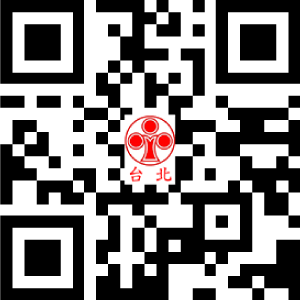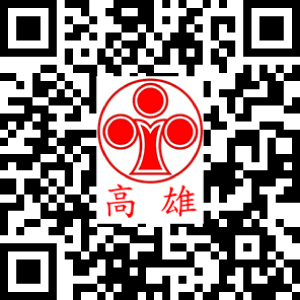
Brief Discussion of the Taiwan Patent Term Extension System
In Taiwan, patentees of invention patents directed to pharmaceutical or agrichemical inventions face a requirement that other patentees will not encounter - they have to obtain regulatory approval issued by relevant Taiwan government authorities before manufacturing their patented pharmaceuticals or agrichemicals in Taiwan or importing the pharmaceuticals or agrichemicals into Taiwan.
More Details
Introduction
In Taiwan, patentees of invention patents directed to pharmaceutical or agrichemical inventions face a requirement that other patentees will not encounter - they have to obtain regulatory approval issued by relevant Taiwan government authorities before manufacturing their patented pharmaceuticals or agrichemicals in Taiwan or importing the pharmaceuticals or agrichemicals into Taiwan. Due to the long period of time from application for a regulatory approval to issuance of the approval, pharmaceutical and agrichemical patentees usually receive their regulatory approvals years after the grant of their patents. In other words, their patented pharmaceuticals or agrichemicals usually cannot enter the Taiwan market immediately after the grant of their patents. To compensate the loss resulting from the long period of time required to obtain a regulatory approval for a pharmaceutical or agrichemical, currently, the Taiwan Patent Act provides a patent term extension system for pharmaceutical and agrichemical inventions. In the following, the patent term extension system will be explained in various aspects.
Regulations about the Taiwan Patent Term Extension System
As indicated in the paragraph above, the Taiwan patent term extension system is directed to pharmaceutical and agrichemical inventions. Specifically, Article 53, Paragraph 1 of the Patent Act stipulates that if a government regulatory approval must be obtained before exploiting an invention patent directed to a pharmaceutical or agrichemical or the manufacturing process of the pharmaceutical or agrichemical and if the approval is obtained after the grant and publication of the patent, patent term extension of the patent may be applied for once. Based on the Patent Examination Guidelines, pharmaceuticals include drugs for diagnosing, treating, alleviating or preventing human diseases and other drugs affecting the human body and physiological functions. Furthermore, Article 53, Paragraph 3 of the Patent Act and the Patent Examination Guidelines stipulate that the following are not targets for patent term extension: animal drugs, medical devices, cosmetics, health food, packaging for pharmaceuticals or agrichemicals, intermediates and catalysts for manufacturing pharmaceuticals or agrichemicals, machines and devices for manufacturing pharmaceuticals or agrichemicals, chemicals that are not used as pharmaceuticals or agrichemicals and the uses of such chemicals, and enhancers and adjuvants that are not active ingredients by themselves.
In case that a patent is eligible for applying for patent term extension, according to Article 53, Paragraph 1 of the Patent Act, the extension may be applied for by the patentee. If the patent right is jointly owned by more than one patentee, each of the patentees may apply for the extension unless there is a representative designated by a covenant. Besides, in case that the patent has been exclusively licensed, as regulated in the Patent Examination Guidelines, the exclusive licensee may also apply for the extension.
With regard to the basis for applying for patent term extension, Article 53, Paragraph 1 of the Patent Act stipulates that application for patent term extension of an invention patent must be based on the first regulatory approval for a pharmaceutical or agrichemical and a single regulatory approval can be used for applying for patent term extension only once. The Patent Examination Guidelines further explain that the term “first regulatory approval” refers to the very first regulatory approval issued for the combination of a specific “active ingredient” and a specific “use.” If several regulatory approvals are issued for the same active ingredient and use combination, only the firstly issued regulatory approval can be used as the basis for patent term extension. That is, after a first regulatory approval is issued for the combination of a specific active ingredient and a specific use, regulatory approvals issued for the same active ingredient and use combination but a different dosage form or dose amount cannot be used for applying for patent term extension.
For the “active ingredient,” a compound per se and the salts, hydrates, crystal forms and stereoisomers thereof are considered different when determining whether the active ingredient on a regulatory approval is covered by the scope of the claims of the patent concerned. If the active ingredient on a first regulatory approval is shown as a specific salt, hydrate, crystal form or stereoisomer of a specific chemical compound while the claims of the patent concerned are drafted as directed to the specific compound per se and do not mention any salt, hydrate, crystal form or stereoisomer of the compound, the active ingredient on the first regulatory approval will be deemed as not covered by the scope of the claims of the patent and therefore the regulatory approval cannot be used to extend the term of the patent. Furthermore, different regulatory approvals issued for different salts, different esters or different hydrates of the same chemical moiety may all be deemed as first regulatory approvals. That is, if several regulatory approvals are issued for different salts, esters or hydrates of a specific compound, each of the approvals that are firstly issued for a specific salt, ester or hydrate will be deemed as a first regulatory approval that could be used as the basis for applying for patent term extension as long as the salt, ester or hydrate is covered by the scope of the claims of the patent concerned.
The term “use” refers to the indication shown on the regulatory approval for a pharmaceutical and the use and the scope of application shown on the regulatory approval for an agrichemical.
Furthermore, based on the Patent Examination Guidelines, in addition to the patentee, the holder of the first regulatory approval may also be the exclusive licensee or a non-exclusive licensee of the patent concerned.
Turning to the timing for applying for patent term extension, Article 53, Paragraph 4 of the Patent Act stipulates that an application for patent term extension should be filed within three months after receiving the first regulatory approval. However, once the original term of the patent concerned is going to expire within six months, application for patent term extension will not be allowed.
Regarding the length of a patent term that can be extended, Article 53, Paragraph 2 stipulates that the length extended should be no more than the period that the patentee cannot exploit his patent due to requesting for the regulatory approval with the relevant Taiwan government authority and the maximum of extension is five years. The Patent Examination Guidelines explain that for pharmaceuticals, such period includes the periods of necessary clinical trials in Taiwan and in a foreign country and the examination period for registration of medicinal products in Taiwan. For agrichemicals, such period includes the periods of necessary field trials in Taiwan and in a foreign country and the examination period for approval and registration of agrichemicals in Taiwan.
Concerning the scope of protection that is extended by patent term extension, according to Article 56 of the Patent Act, only the patent term of the scope defined by the combination of the active ingredient and the use shown on the first regulatory approval is extended. In other words, for a patent with a claim scope covering chemical entities and uses other than those shown on the first regulatory approval, the patent term of such chemical entities and uses will not be extended. Furthermore, if the claims of a patent define a pharmaceutical or agrichemical compound but do not specifically limit the use of the compound, the scope of protection extended by patent term extension will still be the scope defined by the combination of the active ingredient and the use shown on the first regulatory approval rather than the active ingredient with no limitation of its uses.
Measures That May be Taken Considering the Limitation of the Taiwan Patent Term Extension System
In summary, although the Taiwan Patent Act provides a patent term extension system to compensate the loss resulting from the long period of time required to obtain a regulatory approval for a pharmaceutical or agrichemical, many limitations exist in the system. Taking such limitations into account, proper measures may need to be taken during the drafting and prosecution of a patent application directed to a pharmaceutical or agrichemical invention.
For instance, because a compound per se and the salts, hydrates, crystal forms and stereoisomers of the compound are not considered equal when determining whether the active ingredient shown on a first regulatory approval is covered by the scope of the claims of a patent, it is better to draft the claims of a patent application to cover not only the interested compound per se but also all salts, hydrates, crystal forms and stereoisomers thereof that may be of pharmaceutical or agrichemical use. That is, “a compound or a pharmaceutical/agrichemical acceptable salt/hydrate/crystal form/stereoisomer thereof,” for example, may be a better designation of the subject matter of a claim compared to “a compound” in order to prevent that the active ingredient on the first regulatory approval is not covered by the scope of the claims of the patent concerned.
Furthermore, because the patent term of a single patent can be extended only once, applicants may consider filing a divisional application before allowance of their Taiwanese patent applications. Specifically, if the scope of the claims of a patent application covers several chemical entities and the applicant finds that a first chemical entity is of pharmaceutical or agrichemical commercial value during the prosecution of the application, the applicant may divide the application into two applications respectively claiming the first chemical entity and the remaining chemical entities. By doing so, if the applicant subsequently discovers that a second chemical entity covered by the scope of the claims also possesses pharmaceutical or agrichemical commercial value, the applicant could apply for extension of the patent term for the second chemical entity as well because the first chemical entity and the second chemical entity are protected by different patents and the term of each patent can be respectively extended to protect both of the chemical entities.
Conclusion
In conclusion, in order to gain the greatest benefit from their Taiwan patents, patentees of Taiwan pharmaceutical and agrichemical patents need to take the limitations of the Taiwan patent term extension system into consideration not only after the grant of their patents but also during the drafting and prosecution stages of their patent applications.







